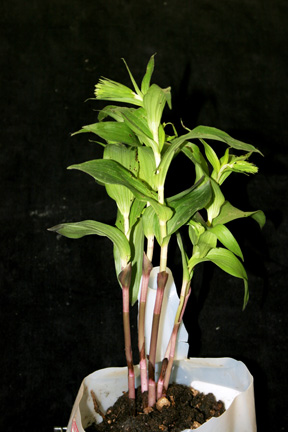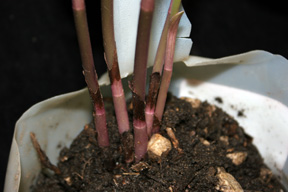Weedy orchid becoming a problem for homeowners
Editor’s note: This article is from the archives of the MSU Crop Advisory Team Alerts. Check the label of any pesticide referenced to ensure your use is included.
Broad-leaved helleborine (Epipactis helleborine) is quickly becoming a problem for homeowners this spring. We have had multiple samples submitted to MSU Diagnostic Services. This plant is in the orchid family, orchidaceae, and is sometimes referred to as a “weedy” orchid. It was intentionally introduced from Europe and is spreading throughout Michigan in lawns, flower beds and along driveways. It has been detected this year in Allegan, Calhoun and Ingham counties. According to Voss’s Michigan Flora, roots and seeds of helleborine obtained from New York were intentionally planted in Niles, Michigan (Berrien County) in 1891. It was noted to be widely established in the Niles area by 1919. It is not known whether any other plants discovered throughout Michigan were derived from this population.
Helleborine is a monocot that arises from fleshy roots or rhizomes. This allows for several stems to develop from the same rootstock. The leaves are alternate, parallel veined, sessile and clasp at the stem. The flowers are bilaterally symmetrical and are greenish-white with a violet tint. This plant can grow up to 36 inches tall.
Control
of this plant is proving to be quite difficult. After consulting
several specialists on campus, there appears to be no magic bullet.
There has been no research on the effectiveness of herbicides on this
particular plant. The plants can be removed by hand, but it is important
to get all the roots because any pieces left in the soil can sprout new
plants. Reports from clients indicate that single doses of glyphosate
(Roundup®) are not effective. It has been suggested that trying products
that contain 2,4-D or triclopyr (or both) may be effective as these
will often control non-grass monocots. It is important to always read
and follow labeled directions to prevent injury to non-target plants.



 Print
Print Email
Email






